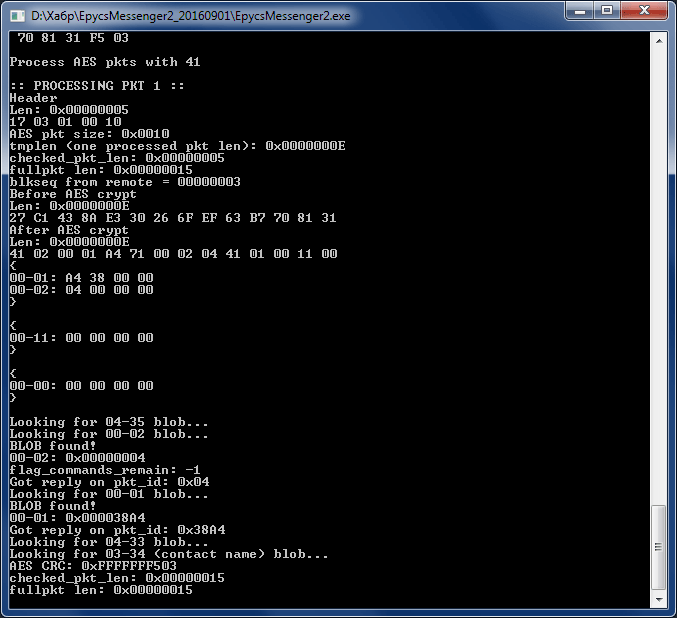The first self-made client that connects to Skype Network

Skype is one of the most insecure messengers for objective reasons. One of them is an obfuscated binary file to make reverse engineering more difficult. Microsoft refuses to provide source code for auditing and verification by security experts, the last verification was conducted in 2005 .
Despite all the risks, many people have to use the Skype client.
The closeness of the protocol and the official client forced the activists to violate the DMCA law and forcibly deobfuse the client's binary code.
As part of the Skype Open Source project in June 2011, the reverse engineering of the Skype 3.8 protocol was carried out.
In March 2012, the deobfuscated binary client of the original Skype 5.5 was released with debug protection removed.
Skype 5.5 was a hybrid of a graphical interface written in Delphi and embedded DLLs with the “core”. The core of the program is a completely independent structure at the level of a binary code: code blocks, data blocks, imports. Judging by the presence of traces of the VC libraries, the Visual C ++ compiler was used to compile the program.
Now finding that client and source code is not easy, because according to the requirements of the DMCA, the hosters deleted the original blog, as well as almost all copies of the client
skype55.zip, which were distributed over the web. Years later, Microsoft transferred the Skype super-network peer-to-peer network to its own cloud network, Skype Network, which it switched to in recent versions of the client, and slightly changed the protocol: the changes mainly concerned the addition of DH-384 key exchange before RC4 encryption. Activists had to start work anew - and carry out reverse engineering of the new protocol .
The developers have succeeded again. September 1, 2016 in the new blog Skype Open Source 2 published good newsthe release of the world's first self-made free client, compatible with the Skype Network. Client source code has not yet been removed from Github . The client is limited to sending only text messages.
Epycs Messenger client is written in pure C, with a simple graphical interface on .NET 4.0. Accordingly, the installation requires the presence of the .NET 4.0 environment. The project is loaded and compiled in Visual Studio 2010. The program works only under Windows. The author says that for porting under Linux, you need to slightly pochamanit with sockets.
Links to download binaries:
http://epycs.ru/files/EpycsMessenger2_20160901.zip
https://yadi.sk/d/xvKhmImdugThn
http://dfiles.ru/files/ob1kzcc1x
Source code under LGPL 3.0:
http://epycs.ru/files/EpycsMessenger2_20160901_src.zip
https://yadi.sk/d/V_IWJT-fugvND
http://dfiles.ru/files/ryh285mue


The test machine failed to complete the procedure for importing contacts
The author of the program is Efim Bushmanov . He also wrote previous versions of the deobfuscated Skype client and was the author of the first Skype Open Source blog.
Despite the alleged violation of the DMCA, a commercial license is offered for Epycs Messenger. The collection of donations for the development of the project also continues.
Theoretically, after the reverse engineering of the Skype protocol, any instant messengers can freely connect to the Microsoft network and directly exchange messages with Skype users, including Telegram or Viber messengers.
After publishing source code on Github, some developers have noted a bad code structure, ubiquitous magic strings , memory leaks and ubiquitous buffer overflows . However, this does not detract from the merits of the developer who did a great job. The author asks to test the program and express your suggestions and wishes.
UPD 05.09 . Efim Bushmanov writes that loading contacts has stopped working. It seems that Skype has disabled the server with contact lists altogether. You can add contacts manually if you add the contacts.txt file to the root directory and manually add contacts from Skype in the following format:
u / skypeuser1
u / skypeuser2
u / skypeuser3
u / skypeuser4
u / skypeuser5
The rest seems to be working, says the author.
